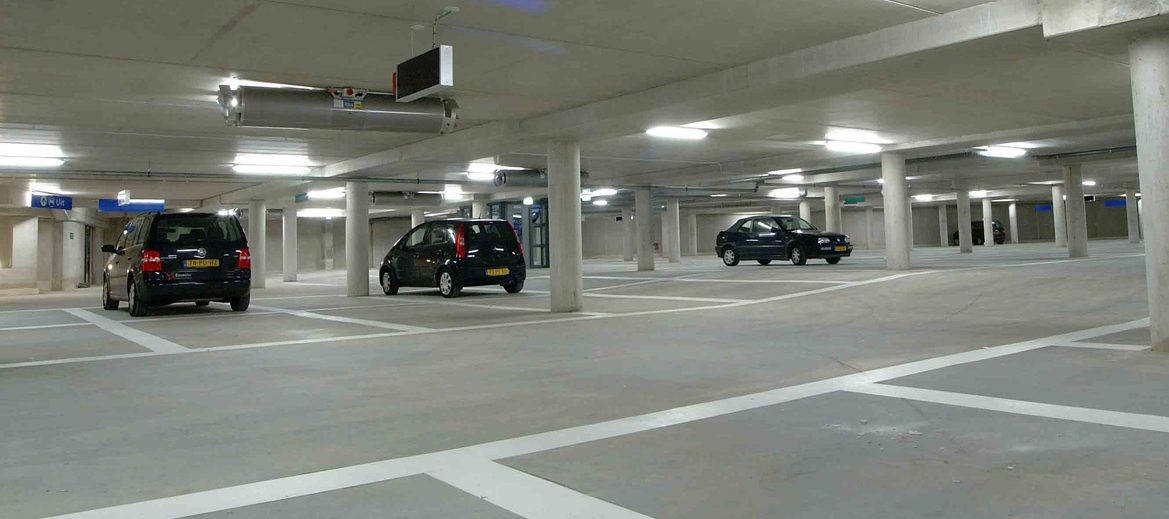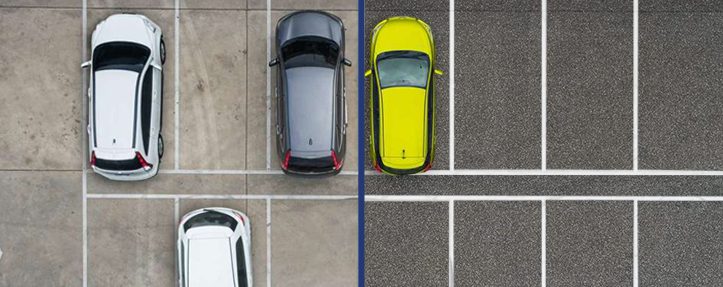The advantage of concrete parking lots over asphalt
Let’s consider why concrete parking lots are better than asphalt ones. Contractors need to understand the benefits of concrete parking lots in order to make the case to their clients.
The initial cost of installing asphalt is still lower than the cost of concrete. Contractors emphasize the lower life cycle costs of concrete based on its longer life and lower maintenance requirements – which is why concrete wins.
Reasons why it is better to build concrete parking lots:
- The difference between asphalt and concrete is that liquid asphalt is used as a binding material for asphalt, and Portland cement is used for concrete.
- Concrete maintenance costs are almost zero – only joint sealing and annual cleaning. Asphalt parking lots need to be covered with liquid asphalt every few years, which leads to parking lot downtime and disadvantages for business.
- The concrete surface is lighter, which accordingly reduces lighting costs and lowers electricity costs.
- The light color of the concrete contributes to a lower temperature in the summer, reducing the thermal effect.
- Concrete pavements can withstand heavy loads without forming ruts and potholes.
- Concrete parking lots can be painted and textured in any style.
- If you compare the total cost of initial installation and 20 years of maintenance costs, concrete is much cheaper. Maintenance of an asphalt plot can be up to 80% of the initial construction cost.

Design.
Comparing parking with other concrete objects, it is obvious that they are exposed to higher loads than floors. The loads are mostly static (or low speed), so flatness and smoothness are not as important as for streets and highways. In the parking lot, a good base, the right thickness, drainage and traction are more important.
Here are a few things to know when designing concrete parking lots:
- It is important to consider that parking is more than just a sidewalk. Parking spaces include slabs, joints, curbs, lampposts and drainage structures – and it all has to work together.
- Parking spaces are usually placed directly on existing soil rather than compacted subgrade. It is important to achieve an even compaction of the ground so that some areas do not settle and crack.
- The water usually flows right to the edge of the pavement or into the gutters. Sometimes gutters are located within the paving area. In any case, sidewalks must have a slope of at least 1%, 6% is the maximum slope in parking lots. The slope of the entrances to the parking lot should not exceed 8%.
- Docking a concrete parking lot is no different from laying any slab on the ground. Parking lots must be isolated from any buildings, gutters or foundations by installing insulation joints. Shrinkage joints should be continuous (not staggered) in square panels at regular intervals.
The primary task when choosing materials should be their durability. The durability of the road surface depends on a good surface layer, frost resistance and general strength. The real issue with strength is flexural strength, not compressive strength, as the pavement must resist bending and cracking more than crushing. Remember that flexural strength is usually about 15% of compressive strength, and the overall flexural strength of a coating is directly related to its thickness.

So, to get strong concrete for parking lots, you need to remember the following:
- Concrete aeration technology is used to improve its stability in winter and is crucial to keep the surface in good shape. Freeze-thaw cycles, especially with anti-icing salts, will cause surface cracking of air-entrained concrete within a year;
- As with any board, you’ll get less shrinkage (and therefore fewer cracks) with a larger aggregate, but keep it less than 1/3 the thickness of the board. Well-chosen mixtures are more convenient to work with and shrink less and, therefore, crack and twist less.







